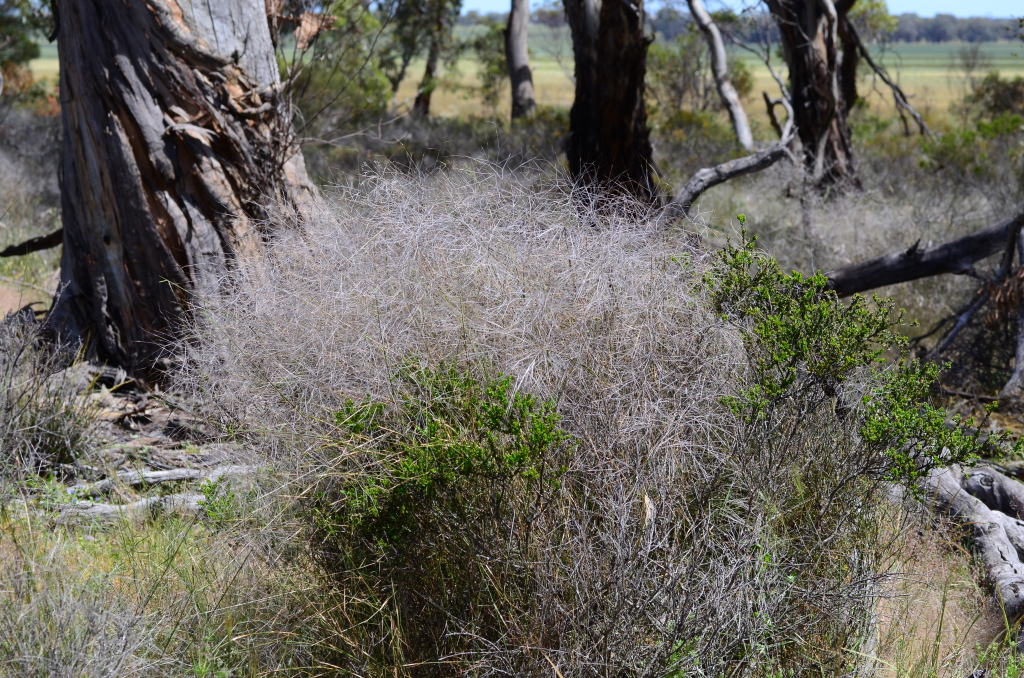Austrostipa elegantissima
(Labill.) S.W.L.Jacobs & J.EverettShortly rhizomatous perennial, culms branched, decumbent, to 2 m long, nodes apparent, glabrous. Leaves glabrous; blade flat or inrolled, to 12 cm long and 4 mm broad; ligule glabrous, truncate, often torn at apex, 2–7 mm long. Inflorescence a widely spreading, pyramidal panicle, to 25 cm long; panicle branches plumose with spreading silky hairs 1.5–3 mm long. Glumes 7–13 mm long, glumes purplish, sub-equal, pilose along the nerves; lemma 5–9 mm long, pale to dark brown at maturity, tuberculate, with short white hairs about the callus, otherwise glabrous or very sparsely hairy toward the apex; coma absent or very sparse, with hairs to 0.5 mm long; callus 0.5–1 mm long; awn once or twice bent, 30–50 mm long, the straight part 5–13 mm long, shortly pubescent; palea up to about one-half as long as lemma and thinly membranous, glabrous. Flowers Sep.–Nov.
LoM, MuM, Wim, VVP, VRiv, MSB, RobP, MuF, GipP, OtP, Gold, CVU, GGr, DunT, NIS, HSF. Scattered and locally common usually in mallee, dry-open woodland, and grassland communities from Mildura district to near Bendigo, east to Nathalia and Violet Town, with disjunct occurrences near Yalla-Y-Poora, Bacchus Marsh, Little River, Western Treatment Plant, Frankston etc. Occurs on a variety of substrates including granitic, shaly or calcareous cliffs, limestone-rich mallee soils, deep sand and saline flats, and Quaternary basalt derived soils, mostly in areas of low effective rainfall.
Walsh, N.G. (1994). Poaceae. In: Walsh, N.G.; Entwisle, T.J., Flora of Victoria Vol. 2, Ferns and Allied Plants, Conifers and Monocotyledons, pp. 356–627. Inkata Press, Melbourne.
 Spinning
Spinning



